Norton Young Readers
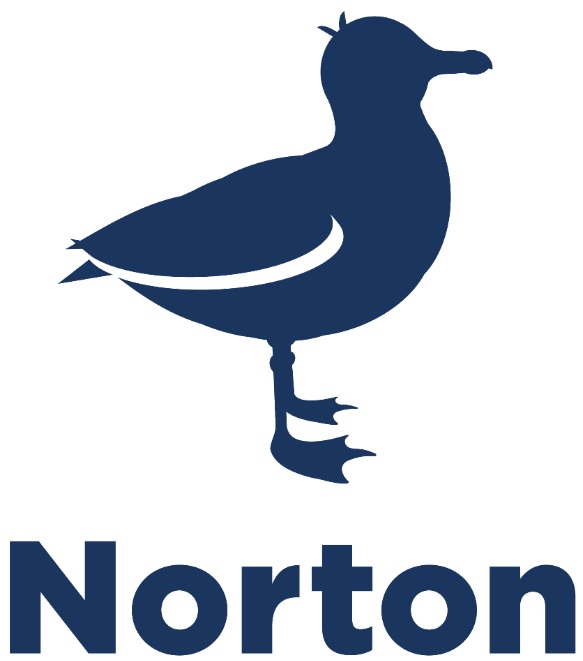 With the support of the publisher, Shelf Awareness celebrates the launch of Norton Young Readers, the new children's and young adult publishing program of W. W. Norton & Company.
With the support of the publisher, Shelf Awareness celebrates the launch of Norton Young Readers, the new children's and young adult publishing program of W. W. Norton & Company.
 With the support of the publisher, Shelf Awareness celebrates the launch of Norton Young Readers, the new children's and young adult publishing program of W. W. Norton & Company.
With the support of the publisher, Shelf Awareness celebrates the launch of Norton Young Readers, the new children's and young adult publishing program of W. W. Norton & Company.
 |
|
| photo: Véronique Lefèvre Sweet | |
Simon Boughton joined W. W. Norton & Company in 2018 as Publishing Director of its new children's and young adult publishing program, Norton Young Readers. Previously, he was Senior Vice President and Publishing Director at the Macmillan Children's Publishing Group and earlier held positions at Simon & Schuster Books for Young Readers and Random House Children's Books.
Hi Simon! Thanks for chatting with Shelf. Would you please tell us about your position with Norton Young Readers?
Though Norton will turn 100 in just a few years, it has never had a dedicated children's or young adult list (although the company's Liveright imprint published the very first Newbery Medal winner, The Story of Mankind). My job is to establish and launch a young readers imprint. It covers pretty much all aspects of setting up a publishing program: acquiring and editing the books; coordinating art direction and design; overseeing publishing, marketing and publicity planning; advocating for the books and the imprint; and making sure that the elements for a successful launch are in place. Starting a list is about the most fun you can have in publishing--it's an opportunity to create an identity and tell a story across a range of books, and I think the first Norton Young Readers list has a good story to tell: a bestselling and beloved picture book creator, an award-winning young adult novelist, a notable middle grade debut, an inspiring activity book and a first-class biography. It's a great statement of intent.
What types of titles is Norton Young Readers publishing? What do you look for in a manuscript?
The imprint will publish a full range of formats, from picture books to young adult, and will be roughly equally balanced between fiction and nonfiction titles. With a broad range but a small list, we'll have only a few titles in any given category and thus the opportunity to highlight individual books.
As far as what I look for in a manuscript... First, the reader: who's the kid who will read this book and what will engage them with it? Then I look for storytelling: for both fiction and nonfiction, text and illustration, I'm interested in strong voices and the ability to craft a good story. And then, what sets the book apart? What attracts attention? One of the challenges in starting a new imprint is getting noticed in a crowded market, so I look for titles that stand out and have the potential to create discussion.
Are there any titles you're particularly excited about? Something you really enjoyed working on?
Looking forward to 2020, highlights include: Feminist AF, an unapologetic guidebook to living feminism out loud for teens by Brittney Cooper, Susana Morris and Chanel Craft Tanner, founders of the Crunk Feminist Collective; The Old Truck, a beautiful, nuanced picture book debut by brothers and collaborator Jarrett and Jerome Pumphrey; a memoir in graphic novel by Olympic gold medalist and pioneering civil rights activist Tommie Smith, co-written with Newbery honoree Derrick Barnes; a picture book about finding your favorite food from bestselling cookbook creator Kenji López-Alt; a second and twice-as-funny picture book from David Shannon featuring Mr. Nogginbody--and much more besides.
What do you hope young readers take from a Norton Young Readers book?
Something unique and memorable--it can be entertainment, fun, knowledge. It means different things for different age readers and for different kinds of books. But most of all, I'd like it to be something special, that they'll remember reading and that helps them see the world in a new light.
 |
|
| photo: Blue Trimarchi ArtWorks | |
David Shannon grew up in Spokane, Wash., and graduated with a BFA in illustration from Art Center College of Design in Pasadena, Calif. In 1983, he moved to New York City and worked as a freelance editorial illustrator. David's work appeared in many publications, including Time, Newsweek, Rolling Stone and the New York Times, as well as numerous book jackets and posters. In 1988, he began illustrating children's books and has since written and/or illustrated more than 40 picture books, including the bestsellers A Bad Case of Stripes, Duck on a Bike, Alice the Fairy and the semi-autobiographical, No, David!, which received a Caldecott Honor in 1999. His latest book is Mr. Nogginbody Gets a Hammer, in which the theatrically clueless Mr. Nogginbody gets carried away by successfully fixing a loose nail in his floor and starts imagining that anything resembling a nail can be fixed with a sturdy whack from his new hammer.
Hello David! Mr. Nogginbody Gets a Hammer is really fun and off-beat with a pretty clear message (and hopeful end!). What made you want to write a book about the "law of the instrument?"
Ha--thank you! Well, I've always thought that was a very pithy observation, and so apropos of the times we're living in. I was looking for a story to go along with the character of Mr. Nogginbody--something that was kind of absurd and unconventional, but that kids would get a kick out of. I was playing around with several ideas and Hammer was the one that said "Pick me! Pick me!"
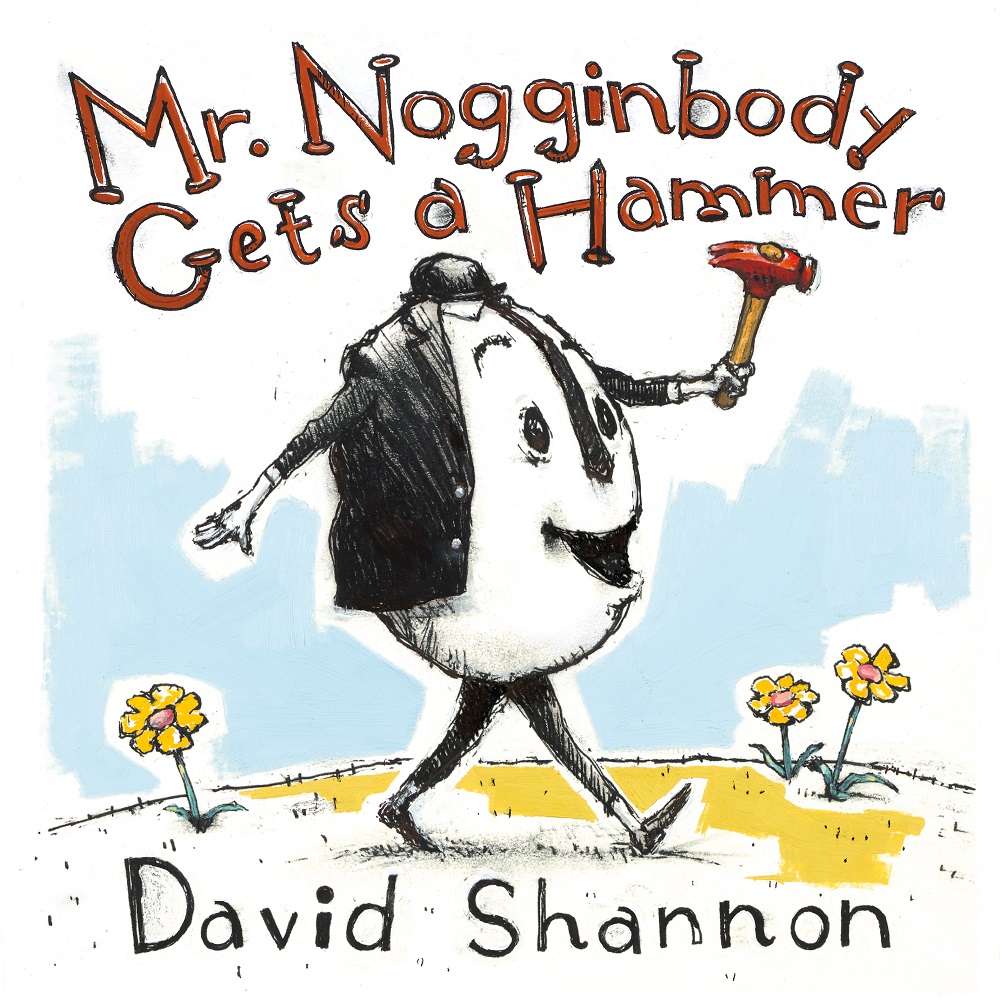 How did you develop the illustrative style of this book? How did Mr. Nogginbody get his look?
How did you develop the illustrative style of this book? How did Mr. Nogginbody get his look?
He started out as a doodle in my sketchbook--sometimes I like to draw "nonsense people." He made me laugh so I kept fooling around with him and drawing him doing different stuff.
You also worked with a very limited color palette. Mr. Nogginbody is entirely black-and-white and the pops of color come from the occasional flowers, signs, background shading. Did you make a conscious decision to keep this world primarily black-and-white?
Yeah, I always saw him as black and white in an odd little world, but I thought I was going to paint it. Usually I sketch out a book in pencil on tracing paper and paint the finishes, but this time the whole thing kind of evolved in my sketchbook with these ink drawings. I really liked their immediacy so I decided to use them for the book, with some minimal color added in paint to go with Mr. Nogginbody's pared-down surroundings. It ended up being a pretty significant departure--and a lot of fun!
The concept that "if all you have is a hammer, everything looks like a nail" has been attributed to Abraham Maslow, Abraham Kaplan, Mark Twain, the Buddha, the Bible, financier Bernard M. Baruch. Is this your sly attempt to get on that list?
Wow--you've done some research! I only knew about Maslow. I don't belong on that list, but I hope they'd all get a kick out of Mr. Nogginbody!
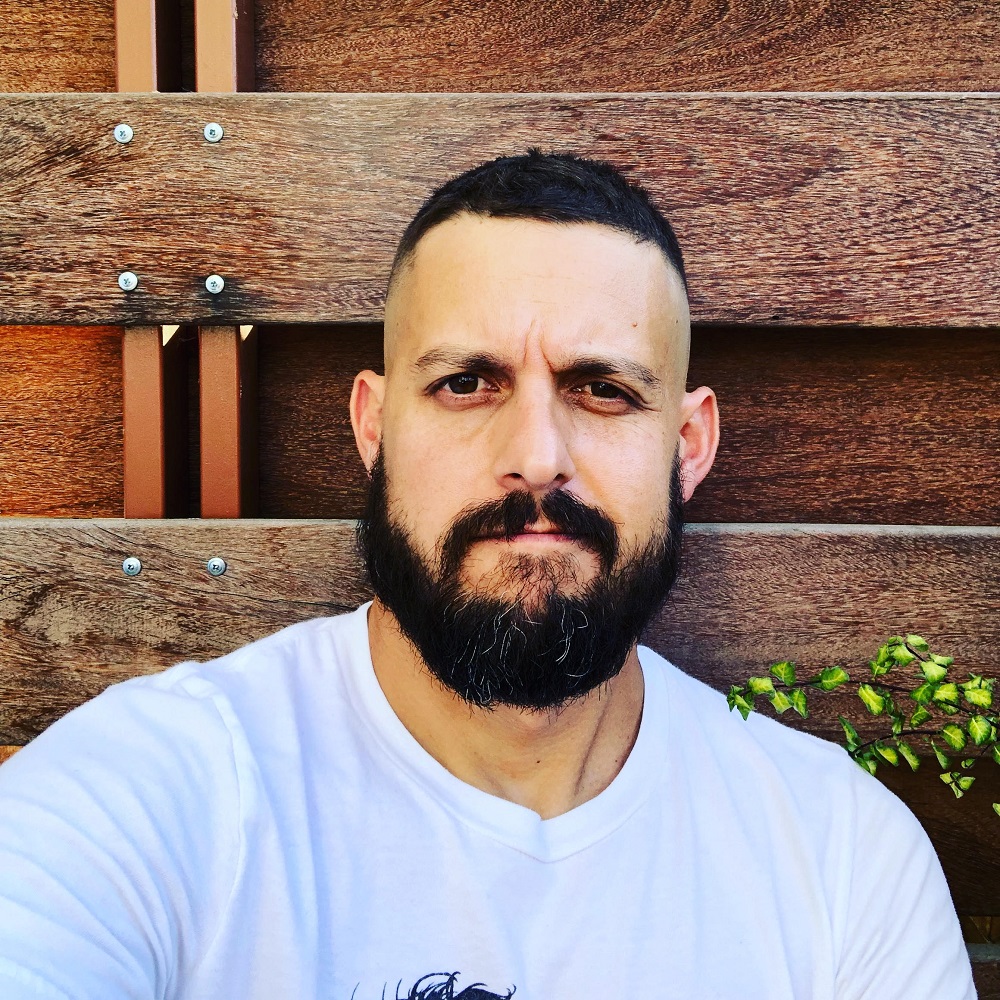 |
|
| photo: Rex Ogle | |
Rex Ogle began his editorial career at DC Comics, working on flagship titles like Justice League, Teen Titans and Superman/Batman. From there, he moved to Scholastic where he helmed New York Times bestselling series like Star Wars: Jedi Academy and Study Hall of Justice, and later, Little Brown for Young Readers, where he developed titles such as the Classroom 13 series and Neil Patrick Harris's Magic Misfits. Rex Ogle has more than 100 published titles in the children's space under various pen names, but is most proud of the ones he writes under his own name. Free Lunch is the story of Rex Ogle's first semester in sixth grade when he was on his school's free lunch program. Grounded in the immediacy of physical hunger and the humiliation of having to announce it every day in the school lunch line, Rex's is a compelling story of a more profound hunger--that of a child for his parents' love and care.
Thanks for chatting with Shelf, Rex! Free Lunch is your middle-grade debut. Why did you want to tell your story to this age group?
Middle grade readers are at that age where they are entering a difficult time in their lives. They're learning about themselves and the world, dealing with changing bodies and evolving friendships and dealing with heavy emotional issues. I wanted to share my story so that they could see a perspective that might either mirror their own, or be completely foreign to them. If my readers are dealing with similar things--like poverty or domestic violence--I hope it lets them know they aren't alone, and offers some hope. And if these difficult topics are alien to the reader, then perhaps it will give them some awareness and compassion for those dealing with these issues.
With my book, I also wanted to push the boundaries a bit. Not because I want to be salacious, but because we live in a world where young readers are exposed to heavy themes every single day--be it through TV or video games or music or movies or friends or the internet. As an uncle of six awesome youths, I want to keep my nieces and nephews as innocent as possible for as long as possible. But I also know they're more mature than adults give them credit for. Preventing exposure is impossible in today's world. So rather than try to hide them from difficult truths, I would like to enlighten them--gently and carefully--in order to start open and honest conversations about hard things they might not fully understand.
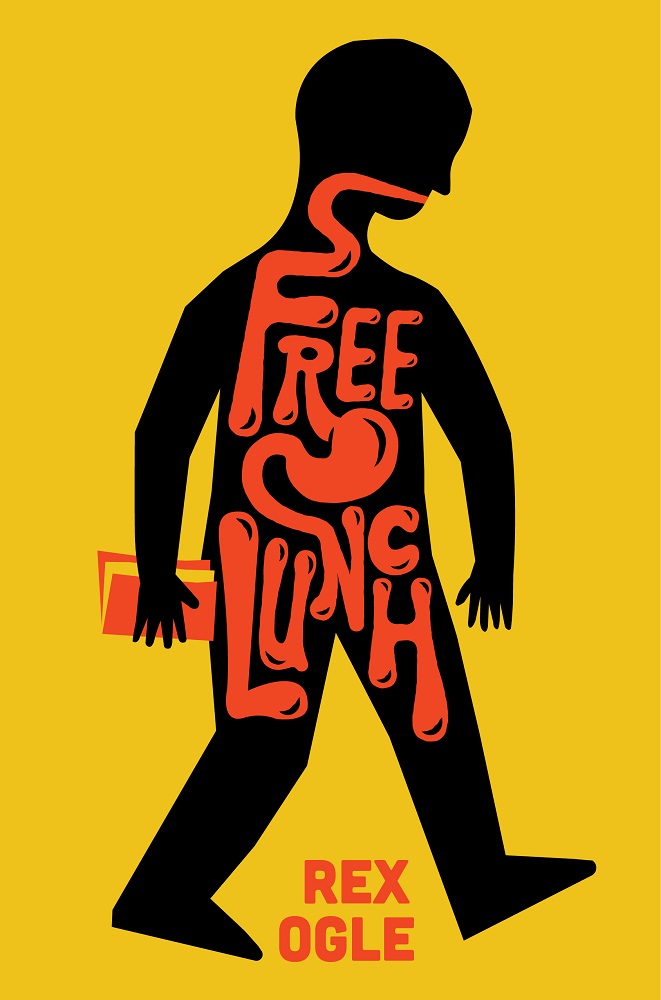 You have done a fair amount of writing for comics and graphic novels. How was the experience of writing Free Lunch similar? Different?
You have done a fair amount of writing for comics and graphic novels. How was the experience of writing Free Lunch similar? Different?
Writing graphic novels and comics is fantastic, because you're essentially sharing the workload with a team. With sequential art storytelling, the writer first writes the manuscript, which describes panels and offers dialogue. Then, the artist does the heavy-lifting. Sometimes there's also a different colorist, and of course the letterer. With prose, it's a very different kind of storytelling. The author has to rely exclusively on their own skills to "paint the picture" in the mind of the reader. Graphic novels are a collaboration, so even when you're telling a dark story you don't feel alone.
With prose--especially a memoir like Free Lunch--you're completely on your own.
Your story deals with very difficult topics. Was it hard to write those chapters?
Absolutely. Of all the things I've written, Free Lunch was the hardest thing I've ever written. For most of my life I've dealt firsthand with depression, anxiety and panic attacks. I've always wondered whether I was born with it, or if it was a direct result of my childhood. So, delving into my past to relive some of the more awful moments, I found myself having more anxiety than ever. In the end, it turned out to be a good exercise. I was able to confront those moments and remind myself that they were in the past, that I survived, that I was safe now and that my story might help others.
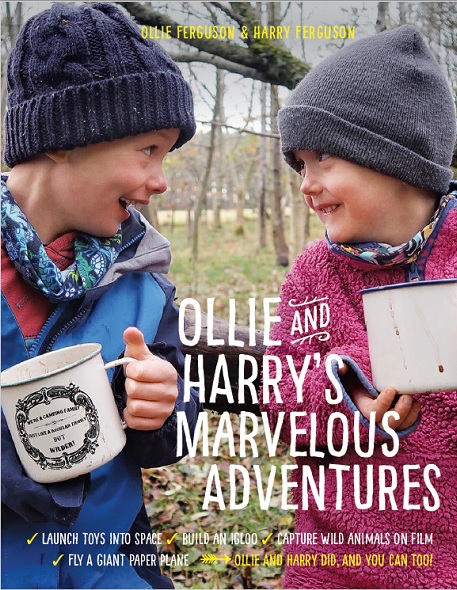 Ollie and Harry's Marvelous Adventures by Ollie Ferguson, Harry Ferguson and Macneill Ferguson ($19.95, 9781324003953, October 8, 2019).
Ollie and Harry's Marvelous Adventures by Ollie Ferguson, Harry Ferguson and Macneill Ferguson ($19.95, 9781324003953, October 8, 2019).
Young Scottish brothers Ollie and Harry, stars of the Facebook page The Days Are Just Packed, have all sorts of educational adventures: photographing the sea floor, launching toys into space, fishing with magnets, tracking wild animals and much more. Kids eight and up will be inspired and amused by these and hundreds of other adventures, rendered in more than 150 photos and illustrations.
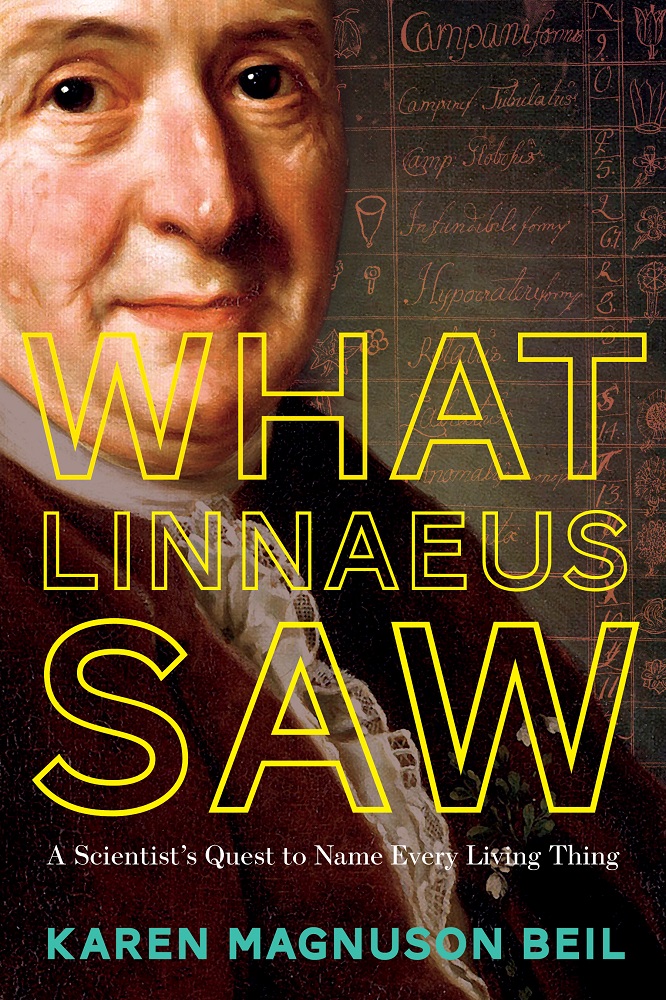 What Linnaeus Saw: A Scientist's Quest to Name Every Living Thing by Karen Magnuson Beil ($21.95, 9781324004684, October 1, 2019).
What Linnaeus Saw: A Scientist's Quest to Name Every Living Thing by Karen Magnuson Beil ($21.95, 9781324004684, October 1, 2019).
Carl Linnaeus (1707-1778) was a Swedish naturalist whose formalized system of binomial nomenclature laid the foundation for modern taxonomy. In What Linnaeus Saw, Karen Magnuson Beil tracks key events in Linnaeus's life, from his boyhood woodland exploration to his student days in Holland and attempts to grow a banana plant in Amsterdam. Readers age 10-14 will love learning about the man who invented scientific names. Includes 60 photographs and illustrations.
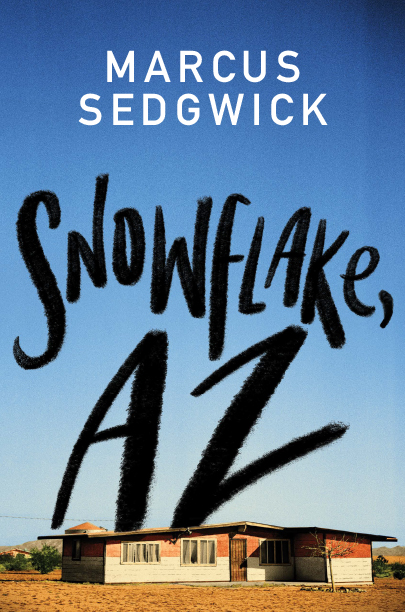 Snowflake, AZ by Marcus Sedgwick ($18.95, 9781324004417, September 17, 2019).
Snowflake, AZ by Marcus Sedgwick ($18.95, 9781324004417, September 17, 2019).
This young adult novel follows Ash, who pursues missing stepbrother Bly to the small town of Snowflake, Arizona. Six thousand feet high in the desert, Ash meets Mona, her goat Socrates and dog Blackie, along with Bly. The residents of Snowflake live with tin foil on their walls and suffer from illnesses caused by modern life. Meanwhile, the world at large may or may not be ending. Marcus Sedgwick received the Printz Medal for Midwinterblood and Printz Honor awards for Revolver and The Ghosts of Heaven
.